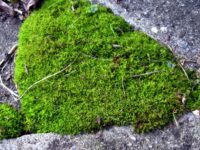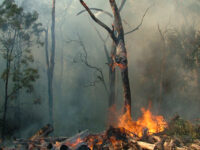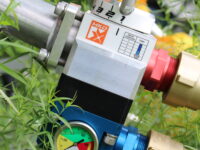The slimy and smelly seaweed known to repulse many swimmers and beachgoers may serve as a key mitigation strategy for climate change in the near future. A species of red macroalgae known as Asparagopsis taxiformis has been shown to reduce methane emissions in livestock. Methane is 28 times more potent as a greenhouse gas than carbon dioxide, and livestock production is the largest anthropogenic methane source. Ruminant livestock, such as cattle, sheep, and goats, ferment plant-based food in a separate stomach known as the rumen prior to digestion. During this fermentation, a group of microbes produce methane in a process called methanogenesis. The methane is then released into the atmosphere, mainly through belching or flatulence.
Since methane has such a strong warming potential and is short lived in the atmosphere, targeting emissions may translate to noticeable reductions in warming within the next few decades. In areas of Northwestern Europe, seaweed has historically been fed to cows, but the potential benefit of seaweeds under the Asparagopsis genus has only recently been discovered.
A team of researchers at James Cook University in Queensland, Australia have revealed how effective A. taxiformis can be at reducing methane emissions from cattle. Over the course of 90 days, the team fed cattle high grain diets with various concentrations of A. taxiformis. Throughout the study, cattle were placed in respiration chambers to monitor total methane production. Generally, as seaweed inclusion in the livestock feed increased, methane production decreased. Methane reductions reached 98% in cattle fed the highest amounts of seaweed.
“Methane reductions reached 98% in cattle fed the highest amounts of seaweed.”
The main bioactive compound in A. taxiformis that is responsible for reducing methanogenesis, known as bromoform, is thought to be carcinogenic to humans. However, in samples of meat, kidney, and fat taken from the cattle, no bromoform residues were detected. Additionally, as determined by consumer sensory evaluations, the seaweed did not impact the cattle meat tenderness, flavor, or quality.
While implementing A. taxiformis as a feed additive could drastically reduce livestock methane emissions, there are many uncertainties regarding economic feasibility. Wild harvesting of A. taxiformis likely would not meet the demand of the growing agricultural industry, creating a need for upscaled cultivation methods. In order for A. taxiformis to be effective at inhibiting methanogenesis, high bromoform concentrations are crucial. Dr. Jennifer Smith and her lab at the Scripps Institute of Oceanography in San Diego are working to identify ideal conditions to maximize seaweed bromoform concentrations and are further developing aquaculture approaches for onshore cultivation of A. taxiformis. The seaweed is native to Australia and New Zealand but has spread globally and is considered an invasive species. To avoid damaging native ecosystems through open ocean aquaculture, Blue Ocean Barns, a Hawaii-based aquaculture farm, cultivates A. taxiformis in land-based tanks. However, expanding land-based cultivation of seaweeds to a larger scale may introduce land use conflicts and challenges with resource management.
Although A. taxiformis would greatly reduce livestock methane emissions, the agricultural industry inflicts a plethora of other environmental issues, from degraded water resources to loss of biodiversity. When used in combination with improved agricultural practices, seaweed in livestock feed could be a promising solution for methane emissions but does not address the other damages caused by growing agricultural production.






